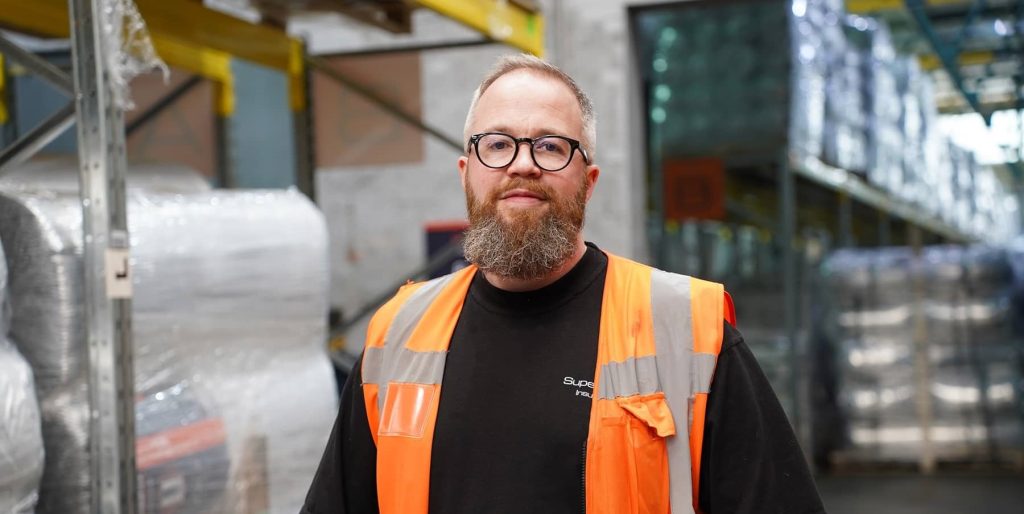How is the UK construction sector tackling the climate crisis?
In 2019, the UK construction industry produced 13.5 million metric tons of CO2, which is around 3% of the UK’s total carbon dioxide emissions from that year. 21-22% of the UK’s total carbon emissions (including imported emissions) are also directly controlled by the built environment sector.
We previously reported that the sector can reach net-zero carbon emissions by 2050, but what is the sector doing to tackle the significant number of emissions that it’s responsible for and are there any barriers preventing it from reducing them? Here at Building Products, we’ve taken a closer look.
The CO2nstruct Zero Program
The Construction Leadership Council (CLC) recently launched CO2nstruct Zero, an industry-wide program, delivered in agreement with the Government, to drive carbon out of the construction sector.
In the Performance Framework for the plan, a number of commitments made by the construction industry to reduce carbon emissions were set out:
- Working with the Government to deliver retrofitting to 27 million homes by 2040
- 78% of diesel plant to be eliminated from construction sites by 2035
- From 2022, we will give all our clients the chance to become net-zero by offering alternative low carbon design options
We will target 1,500 of the sector’s businesses and clients to sign up to a measurable carbon reduction plan (including Race to Zero, Science based Targets or Climate Hub) by 2025
At the time of its release, Andy Mitchell, Co-chair of the Construction Leadership Council, commented: “It is a bold and ambitious plan, laying out the priorities to deliver a fundamental change in the sector.
“The CLC’s role is not to develop new solutions, roadmaps or new pathways – there are many groups in the industry well placed to do this – but we believe that the CLC does have a critical role to play in bringing people together to consolidate collective actions and plans for the sector.
“We can help drive change by helping to share innovative solutions and set transparent goals and clear actions that everyone can help to achieve.”
The first progress report of the scheme is expected in the Autumn, which will enable an assessment of its initial success to be made.
However, the CO2nstruct Zero scheme is not the only scheme designed to reduced emissions.
We spoke to Alexandra Jonca, Project Officer for the Whole Life Carbon Roadmap at the UK Green Building Council, who commented: “We are beginning to see an increase in initiatives for specific supply chains and built environment sectors.
“The UKGBC Whole Life Carbon Roadmap sets out a carbon budget for the UK Built Environment sector to allow the sector to track its progress in reducing emissions to net-zero by 2050.
“The Roadmap also sets out the policies and actions that will be needed for this transition, building on existing work in the industry. We are seeing sub-sectors (for example retail) publish their own decarbonisation roadmaps.
“Companies and businesses are also taking action – 47 UK companies have signed up to the World Green Building Council Net Zero Carbon Buildings Commitment, which asks companies to achieve net-zero operating emissions in their portfolios by 2030 and to advocate for a net-zero built environment.”
Zero-Carbon housing
The Government’s Zero Carbon Policy scheme has required all new homes built from 2016 to mitigate the carbon emissions produced on-site because of the regulated energy use.
But with the announcement of the Future Homes Standard, plans to create more energy-efficient homes and business have been accelerated. Under the Future Homes Standard, all new homes are expected to produce 75-80% lower carbon emissions compared to current levels by 2025.
Under this standard, new homes built from 2021 will also be expected to produce 31% lower carbon emissions. But to successfully deliver these low-carbon homes, support from housing developers is essential, so to what extent are they providing it and is this standard being met?
One company supporting the delivery of zero carbon homes is Sero, an energy service and tech company based in Cardiff, who recently launched a New Build Specification to help others in the industry deliver truly net-zero in operation homes.
The publication of their specification follows the recent release of the Welsh Government’s latest Development Quality Requirements, Creating Beautiful Homes and Places, which requires that all newly built social homes in Wales will need to be fossil fuel free and reach the highest energy efficiency standards moving forward.
Andy Sutton, Co-Founder and Chief Innovation Officer at Sero, explained: “We’re sharing this specification to support the faster and wider adoption of zero carbon new build construction standards as part of the urgently needed response to the Climate Emergency.
“We know that homes built to this performance standard will be truly net-zero carbon in operation during the 2030s, although precisely when depends on the individual details of the home and layout.
“The performance of the homes will be assessed post-construction to prove their net-zero credentials and we are developing a digital product to make this as simple as possible.”
In April 2021, housing developer Etopia Homes also became the UK’s first developer to commit to achieving an EDGE Zero Carbon certification. This is a certification scheme run by Edge Buildings, which recognises homes that achieve a 100% reduction in operational emissions.
Speaking at the time of the announcement, Joseph Daniels, CEO and Founder of Etopia Group, said: “The UK is in the midst of a dual crisis: climate change and a shortage of homes.
“Our commitment to achieving the EDGE Zero Carbon certification at Juniper Place is just the beginning of our journey to revolutionising the delivery of green homes across the UK.
“Our data-led, technology-driven approach will ensure that we’re able to meet the certification’s stringent criteria, optimise our methods of delivering zero-carbon homes, and actively offer a ready-to-go solution to the UK’s climate change and housing crises.”
The following month Starship also launched its first zero-carbon affordable homes project, a 105-home development at the site of the 2017 gas explosion on the Wirral.
However, earlier in 2021, the Government announced it was scrapping the Green Homes Grant Scheme after just 12 months. This scheme was set up to fund energy-efficient home improvements and during the time it was running, 22,165 grants worth £94.1m were issued. Scrapping the scheme prompted widespread criticism from those in the industry.
Speaking at the time, Ian Henderson, Founder and Managing Director of Cramlington-based Boiler Plan UK, commented: “It is disgraceful that the government has all but scrapped this scheme before it has even got off the ground.
“Many businesses, including our own, have invested in infrastructure and people to deliver this initiative in line with the government’s guidelines.
“A move away from this spending commitment will undoubtably cost jobs and affect livelihoods at a time when our economy is on its knees. The government needs to seriously rethink this and deliver on the promises they have made.
“Its commitment to achieving net-zero by 2050 looks almost impossible without the widespread uptake of measures that will improve the energy efficiency of Britain’s housing stock – which is among the worst in Europe.”
Whilst it’s important for new homes in the UK to be built with low-carbon technologies, the majority of Britain’s 29 million housing stock have been up for some time and many of them are not even close to meeting the performance levels required by the government’s Future Homes Standard.
The Green Homes Grant was an important measure in addressing the disparity in energy-efficiency between new and existing UK homes, so it’s scrapping could be a major backwards step in the construction and home improvement sector’s fight to tackle climate change.
Supply chains and the way buildings are being constructed
“We need to increasingly look at buildings and products through a whole life carbon lens – decisions cannot be made without the consideration of their life cycle impacts”, said Tom Spurrier, Project Lead for the Whole Life Carbon Roadmap at the UK Green Building Council.
“The product and construction stages are significant contributors to the whole life carbon footprint of a building and can be responsible for 50% of a building’s emissions.
“While there have been improvements in reducing the carbon intensity of material production and we have become better at designing efficient buildings, there are still significant improvements to be made.
“Any new buildings must be designed to achieve net-zero, but this will not be enough to tackle embodied carbon, which is going to become a much higher share of the built environment’s carbon footprint.
“Tackling embodied carbon will likely require the greater reuse of entire structures and materials, reconceptualising how we use buildings, and ensuring there is adequate government support for supporting decarbonisation strategies in high-polluting material industries.
“Supply chains cannot decarbonise materials and products without support and demand from other players in the value chain.
“One example where businesses have created eco-friendly alternatives to traditional building materials is artificial green walls. These are naturalistic wall panels built from eco-friendly materials, which are produced to directly replicate the organic movement and texture of living walls.
“Vistafolia, a global supplier of artificial green walls, recently collaborated with the University of Surrey to create a new base polymer to enhance their artificial green wall product range, with the walls also being built using renewable sources.”
When speaking on the collaboration, Paul Alder, Managing Director of Vistafolia, had this to say: “We are incredibly excited to be working with the University of Surrey on this revolutionary research project, uniting meticulous design with pioneering science to accelerate the creation of a more sustainable product offering for our clients.
“Not only will the project increase our own innovation efforts, but the partnership will strengthen our positioning as a UK-led global business within the competitive artificial plant market. We hope to drive sustainability in the sector and encourage our competitors to focus on sustainability as a key issue while pushing the environmental boundaries in R&D and production.”
Unfortunately, artificial green walls are more of a niche product, so their environmental benefits are somewhat limited. However, if their eco-friendly technologies were to be utilised to create a substitute for concrete walls, the production of which is particularly damaging to the environment, for example, they could significantly reduce emissions from the built sector.
A development in Dallas, USA, was said to be creating the largest green wall in North America on the side of a 26-storey apartment building, so mass utilisation of this technology is, perhaps, within our grasp?
So, what more needs to be done to reduce emissions from the sector?
Tom said: “We need a comprehensive national strategy around domestic retrofit in the UK, to tackle the issue of our 27 million poorly insulated homes, which are predominantly heated via fossil fuels (gas and oil boilers)”
“The built environment sector can decarbonise by 2050 using existing technologies and knowledge, but this will require the industry to step up.
“We also need additional national policies on energy efficiency in non-domestic buildings, such as the Performance-Based Policy Framework for commercial and industrial buildings. Embodied carbon must be regulated as soon as possible, and the Government needs to deliver on its Industrial Decarbonisation Strategy. Net-zero is possible, but we do need every business in the industry, no matter how big or small, to commit to achieving a net-zero built environment.”
Whilst the construction sector has clearly taken significant strides to reduce its emissions, there appears to be a strong case that the government’s proposals do not go far enough to tackle what is a very complex issue.
Of course, the Government cannot assume complete responsibility for the need to lower emissions either, and if we are serious about reversing climate change in light of the damning IPCC report, we will all need to work together as best we can.




















